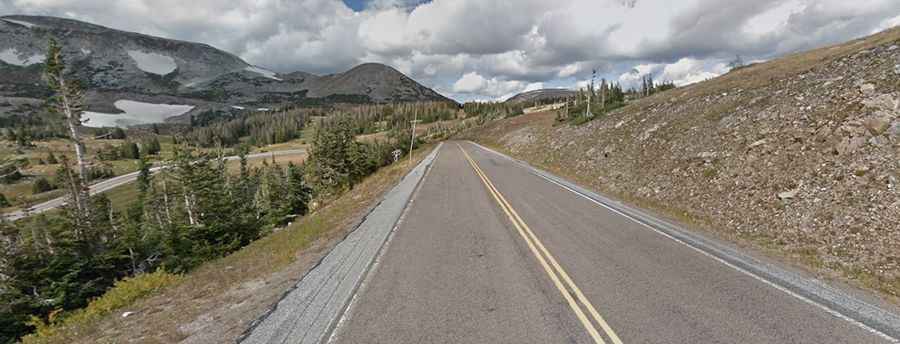Snowy Range Pass is one of the most beautiful drives in Wyoming
Snowy Range Pass is a high mountain pass at an elevation of 3,310m (10,859ft) above sea level, located in the U.S. state of Wyoming. It's one of the highest roads of Wyoming.

Where is Snowy Range Pass?
The pass is located on the boundary between Albany and Carbon counties, in the southern part of Wyoming.
Why is it called Snowy Range Pass?
The pass is named for the large amounts of snow that remain at high elevations during the summer months.
When was Snowy Range Pass built?
The road was built in the 1870s as a wagon road and was paved in the 1930s. It was originally called the “Great Skyroad”. It’s a scenic alternative to I-80.
Is the road to Snowy Range Pass paved?
The road to the summit is a two-lane paved road suitable for all vehicles. It’s called Snowy Range Scenic Byway (Wyoming Highway 130).
How long is the Snowy Range Scenic Byway?
The road is 42.16km (26.2 miles) long, running west-east from Ryan Park (in Carbon County) to Centennial (in Albany County).
How steep is the road to Snowy Range Pass in Wyoming?
The road is steep in parts and hits a 9.5% maximum gradient through some of the ramps.
Is the Snowy Range Pass open?
Set high in the Rocky Mountains, within the Medicine Bow-Routt National Forest, the road is not plowed during the winters: it closes for the season in mid-November and traditionally reopens with the help of snowplows before Memorial Day weekend. Snow usually lingers late into the spring and early summer near the pass. It’s said to be Wyoming's second-highest pass.
How long does it take to drive the Snowy Range Scenic Byway?
Plan about 1 hour to complete the remarkable drive without stops. This is a remarkable road trip through the majestic Snowy Range Mountains and has numerous places to stop or pull off for visitors. The byway is a popular recreation attraction with many picnic, camping, observation, and interpretive facilities. Visitors will find many lakes along the byway and throughout the national forest. Anglers will want to spend some time fishing for trout. Others may want to lay down a blanket and enjoy a picnic. Campgrounds can also be found on the shores of several lakes. If you're interested in pitching a tent or parking your RV, you'll find several campgrounds from which to choose. During your drive remember to be cautious of wildlife on or near the road, especially during early morning and late evening hours. The drive offers deep glacial lakes, pastoral meadows, rushing mountain streams, and awe-inspiring mountain peaks.